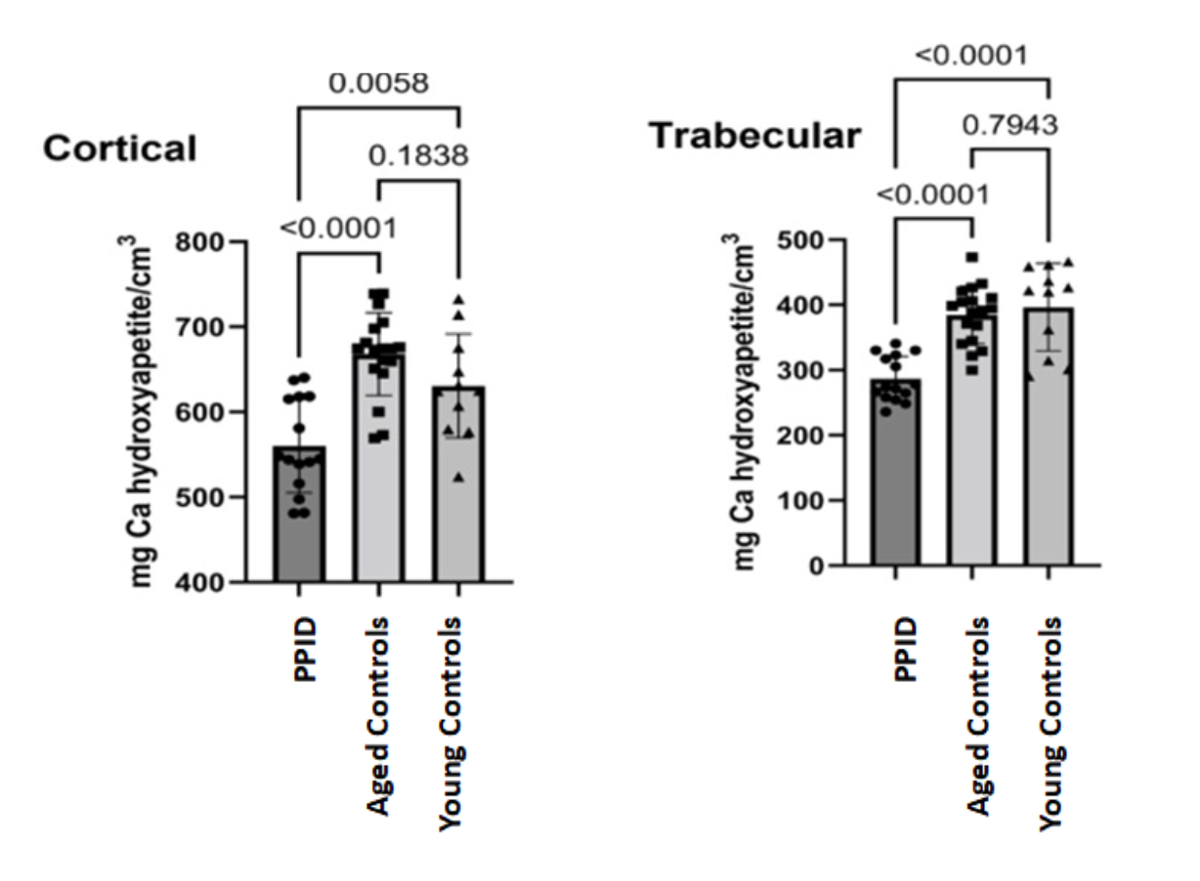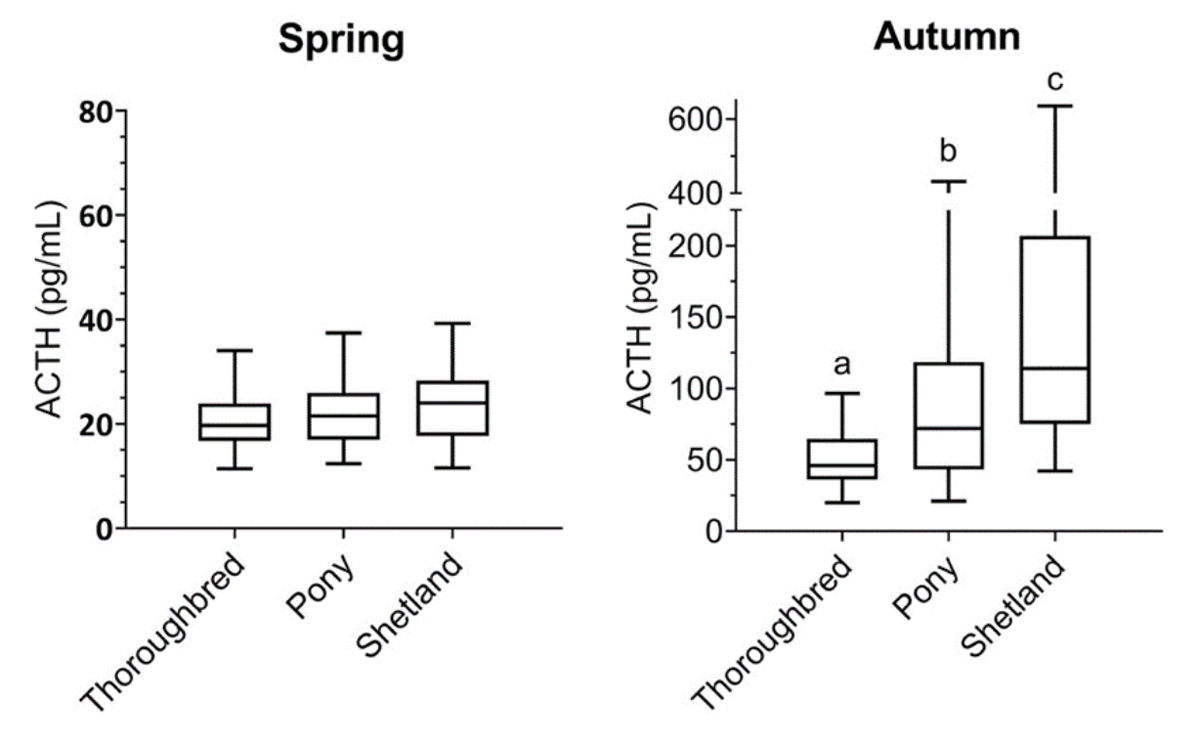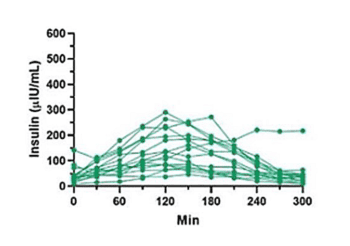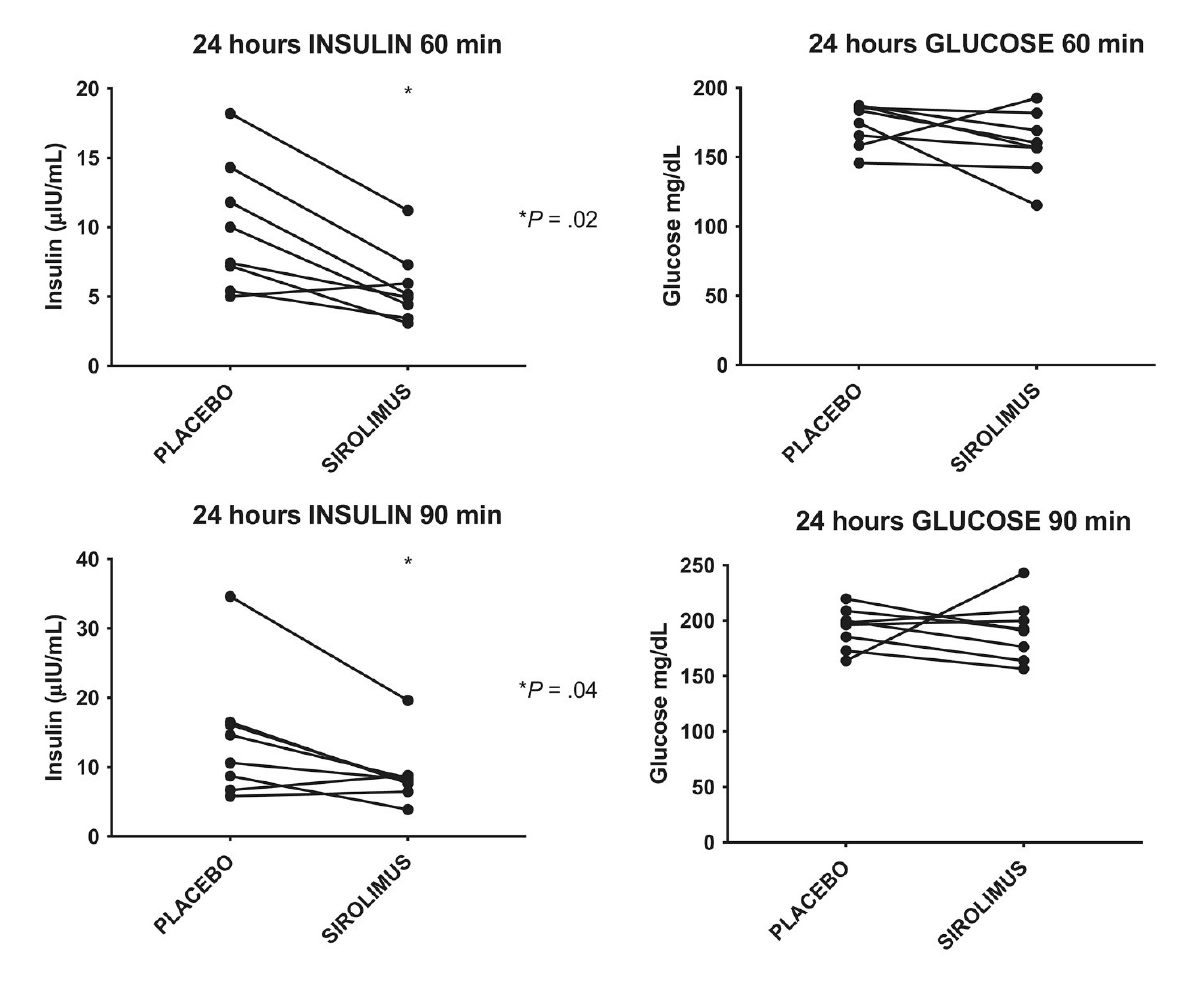21 Nov 2023
Endocrinology: an update on latest research into equids
Nicola Menzies-Gow shares some of the newest findings on these disorders in horses and ponies.

A horse suffering from pituitary pars intermedia dysfunction. Image © HeiSpa / Adobe Stock
Two common equine endocrine disorders exist – namely pituitary pars intermedia dysfunction (PPID) and equine metabolic syndrome (EMS).
Insulin dysregulation (ID) is a key feature of EMS and is a feature of the subset of animals with PPID that are at an increased risk of developing laminitis. Therefore, PPID and ID are the focus of a great deal of equine-focused research worldwide.
This article summarises some of the more clinically relevant abstracts presented at the fifth Global Equine Endocrine Symposium (GEES) in January 2023 and some of the more clinically relevant peer-reviewed manuscripts published this year, which highlight advances in our understanding of disease prevalence, clinical presentation, pathophysiology, diagnosis and management.
The GEES abstracts can be found on the Equine Endocrinology Group website: tinyurl.com/54uppeub
Endocrine disease prevalence
Prevalence of endocrine disease in varying breeds
Evaluation of the prevalence of endocrine disorders within equids of different genetic backgrounds (that is, breed) was undertaken by retrospectively analysing data from 6,266 ponies and horses with suspected PPID and/or ID (Lemcke et al, 2023).
The highest rates of PPID (61%) and ID (72%) occurred in the group comprising miniature horses, Shetland ponies and dwarf ponies; the lowest rates of PPID (22%) and ID (25%) occurred in the groups comprising Lusitano and Andalusian, and Percheron and Belgian draft, respectively.
Therefore, strong breed differences exist in PPID and/or ID prevalence.
Endocrine disease presentation
Survey of owners of animals with endocrine disease
A survey of owners of animals with PPID and/or EMS was undertaken (Sanchez-Londono, 2023a). Of the 964 respondents, 53% had a horse diagnosed with PPID, 21% had a horse diagnosed with EMS, and 26% had a horse diagnosed with both EMS and PPID (n=251).
The most common symptoms recognised by owners of PPID-affected horses were abnormal hair coat/delayed shedding (n=422), muscle mass loss (n=281) and weight loss (n=213). In horses affected by EMS, the most common symptoms were abnormal fat deposits/cresty neck (n=132), the horse being an “easy keeper” (n=129) and laminitis (n=125). In horses affected with both EMS and PPID, the most common symptoms were abnormal hair coat/delayed shedding (n=200), laminitis (n=172) and abnormal fat deposits/cresty neck (n=163).
Regarding diagnosis, the three most commonly used diagnostic tests used for PPID were baseline adrenocorticotropic hormone (ACTH; n=246), clinical signs (n=186) and an EMS panel (n=108). For EMS, the three most commonly used diagnostics were clinical signs (n=103), baseline insulin and glucose concentrations (n=74), and an EMS panel (n=59). For horses with both PPID and EMS, the three most common diagnostics used were baseline ACTH (n=176), baseline insulin and glucose concentrations (n=138), and an EMS panel (n=122).
PPID-affected horses were most commonly diagnosed between 20 to 25 years of age (n=192/511), EMS-affected horses between 10 to 15 years of age (n=64/202), and PPID and EMS-affected horses between 15 to 20 years of age (n=92/251).
Overall, 7% of horses with PPID were being treated (n=361/511), 58% of EMS-affected animals (n=118/202), and 75% of animals with PPID and EMS (n=188/251).
The most frequently used treatment used in PPID (n=277/511) and PPID and EMS (145/251) affected horses was pergolide, while the most common treatment for EMS horses was levothyroxine. Regarding success of treatment, 73% of owners believed it was successful in PPID horses (n=262/361), 75% in EMS horses (n=62/82), and 71% in EMS and PPID horses (n=133/188).
Owners not treating their horse stated this was because no need existed at the time in 58% of PPID cases (n=78/135), 70% of EMS cases (n=83/118), and 75% of PPID and EMS cases (n=43/58).
Endocrine disease pathophysiology
Correlation of pituitary histomorphometry with dopamine and dopamine D2 receptor expression
Dopamine D2 receptor (D2r) down-regulation is involved in pituitary tumours’ development in many species; however, its possible role in PPID has not been established.
Archived formalin-fixed, paraffin-embedded sagittal sections of pituitary glands from 24 horses with PPID and 4 control horses were retrieved (Huang et al, 2022). Cases were categorised based on their pituitary gland histomorphometry grade (0 to 5) and expression of tyrosine hydroxylase (TH; a widely used biomarker of dopaminergic neurons) and D2r was assessed by immunohistochemistry.
Lower TH expression in higher pituitary gland histomorphometry grade confirmed the pivotal role of dopamine in the pathogenesis of PPID; however, the higher D2r expression indicated that down-regulation of the receptor would not be involved in PPID development and supports the use of D2r agonists such as pergolide for treatment, even in advanced cases.
Similarities between equine PPID and Parkinson’s disease
PPID appears to have a similar pathophysiology as Parkinson’s disease (PD) in people, in which accumulation of misfolded α-synuclein (α-syn) contributes to degeneration of dopaminergic neurons.
While increased levels of α-syn have been found in pars intermedia tissue of PPID-affected equids, it is unclear if this α-syn is also mis-folded and whether the mis-folded α-syn could promote further prion-like self-aggregation and propagation.
Studies using pituitary glands from five young horses, five aged horses, and five aged horses with hypertrichosis and additional signs of PPID revealed that equine α-syn is mis-folded in PPID-affected horses, and has self-propagation properties such that it could contribute to dopaminergic neuro-degeneration characteristic of PPID (Fortin et al, 2023).
Effect of dopamine depletion on insulin sensitivity
Low dopamine concentrations have been associated with the pathophysiology of PPID, and about one-third of PPID cases have ID. In other species, dopamine concentrations appear to affect insulin secretion and tissue insulin sensitivity, as do dopamine agonist and antagonist drugs. However, to date, studies with these drugs in horses have not shown a significant effect.
α-methyl-para-tyrosine (AMPT) is a reversible inhibitor of tyrosine hydroxylase, the rate-limiting enzyme involved in the synthesis of dopamine. AMPT has been shown to reduce dopamine concentrations in other species, but its effects have not been studied in horses.
Six adult gelding Standardbred horses were used to determine the role of dopamine and the effect of short-term dopamine depletion in controlling tissue insulin sensitivity, and the insulinaemic response to a glycaemic meal in horses (Galinelli et al, 2023). No evidence was found for dopamine influencing insulin sensitivity. This differs from other species, but it is consistent with previous work in horses.
Lumbar vertebral bone density is decreased in horses with PPID
Pathologic fractures can develop in human and canine patients with Cushing’s disease, and have also been described in PPID-affected equids.
Therefore, a study was undertaken to assess whether equids with PPID have decreased bone mineral density (BMD) in weight-bearing (third metacarpus [MC3] and metatarsus [MT3]) and/or non-weight-bearing bones (lumbar vertebrae), in comparison to aged horses without PPID (Colbath et al, 2023).
BMD of cortical and trabecular regions of the third, fourth, and fifth lumbar vertebrae were significantly lower (P=less than 0.01) in PPID-affected equids compared to aged and young controls (Figure 1).

In contrast, no differences were found in BMD of cortical or trabecular regions of interest in MC3 and MT3. Serum concentrations of parathormone, vitamin D3 and osteocalcin were not different between groups, so potential mechanisms contributing to loss of BMD with PPID warrant further investigation.
Identification of muscle atrophy in PPID
Muscle atrophy has been reported in horses suffering from PPID. An increase in proteolysis has been suggested as the underlying mechanism, and an elevation of muscle atrophy markers has been described. Recently, a muscle atrophy scoring system has been developed and published, including a pilot study in a group of horses with PPID. However, this scoring system has not previously been evaluated in pony breeds. In total, 31 animals (18 ponies and 13 horses older than 15 years of age) were evaluated, of which seven ponies and five horses were diagnosed with PPID (Erdody et al, 2023).
While no differences were reported in body condition score or cresty neck score between the PPID and non-PPID groups, 10/12 PPID cases showed some evidence of muscle atrophy, while 15/19 non-PPID animals showed no signs of muscle atrophy. The results confirm that muscle atrophy is a common feature of PPID, and that old age per se is not typically associated with muscle loss in healthy animals.
Does a link exist between PPID and dental disease?
PPID and dental disorders are of major concern in horses older than 15 years of age. Although PPID in geriatric horses and dental disorders in all age groups are well described, a connection between this endocrine disease and pathological changes in equine dental structures has not yet been investigated.
In humans, periodontitis is considered to be a complication of systemic diseases such as diabetes mellitus type 2, obesity and various conditions, leading to an impaired immune response. In PPID, cross-links to insulin and immune dysregulations are proven. In a case-control morphometric descriptive study, 145 dental locations of 10 PPID-affected horses (27.3 plus or minus 2.06 years) were compared with 147 dental locations of 10 controls (21.4 plus or minus 4.12 years; Zapf et al, 2023).
Histological parameters examined were leukocyte infiltration, keratinisation of gingival epithelium, blood vessel supply of the periodontium and structure of cementum. Multifocal to coalescing leukocytes and irregular cementum were seen more often in PPID-affected animals than in controls; however, these findings mainly reflect an association of older age with periodontal disease rather than PPID.
Diagnosis of an endocrinopathy in adults and foals
Investigation of breed differences in plasma ACTH concentrations among healthy horses and ponies
Plasma ACTH concentration is commonly measured to diagnose PPID. Several intrinsic and extrinsic factors affect ACTH concentrations, including breed. The objective of this study was to prospectively compare plasma ACTH concentrations among different breeds of mature healthy horses and ponies (Bamford et al, 2023) using three breed groups comprised of Thoroughbred horses (n=127), Shetland ponies (n=131) and ponies of non-Shetland breeds (n=141).
Reference intervals were similar among breed groups in spring, but upper limits for ACTH concentrations were markedly different between Thoroughbred horses and pony breeds in autumn (Figure 2).

These findings emphasise that breed should be accounted for when determining and interpreting reference intervals for ACTH concentrations among healthy horses and ponies in autumn.
Can the thyrotropin-releasing hormone stimulation test be used to diagnose PPID using a lower dose of thyrotropin-releasing hormone?
The thyrotropin-releasing hormone (THR) stimulation test for diagnosing PPID usually is performed by injecting 1mg/TRH per horse (2µg/kg). It has been previously shown that ACTH responses were not different after 1µg/kg TRH or 2µg/kg TRH was used in PPID patients.
A new study demonstrated that 0.5µg/kg TRH gave comparable results to 2µg/kg TRH, and so may be sufficient for diagnosing PPID (Taube and Fey, 2023).
A combined TRH-insulin procedure identifies PPID and insulin dysregulation
Many horses with PPID are also afflicted with insulin dysregulation (ID). Combining TRH test and insulin tolerance test (ITT) to diagnose PPID/ID in horses was previously reported using ACTH concentrations 30 minutes after TRH injection to determine PPID status. However, ACTH concentration 10 minutes after TRH administration (T10 ACTH) is more commonly used to determine PPID status.
A study that included five PPID-positive and five PPID-negative insulin-sensitive adult horses demonstrated that combining the TRH stimulation test (using T10 ACTH) with the ITT (using glucose concentration 30 minutes after insulin administration) by having the TRH and the insulin in the same syringe appears to be a valid procedure (Haffner et al, 2023).
Validation and method comparison for a point-of-care lateral flow assay measuring equine whole blood insulin concentrations
The Wellness Ready equine insulin test (WRT) is a stall-side lateral flow assay that measures equine insulin in whole blood. This study aimed to validate the WRT and compare performance to a reference radioimmunoassay (RIA) using residual blood from samples obtained after fasting, feeding and an oral sugar test (Berryhill et al, 2023).
The WRT performed adequately regarding analytical precision and linearity, and showed good association with insulin concentrations measured with the RIA. Specific reference ranges are required to further aid WRT interpretation.
Plasma leptin concentrations in association with laminitis or obesity status in ponies
Leptin is an adipokine released from adipose tissue; however, inconsistent reports exist of associations between increased leptin concentrations with laminitis and obesity status in horses and ponies.
This study aimed to investigate plasma leptin concentrations in association with laminitis or obesity status in a cohort of 143 Shetland and Welsh ponies (Clark et al, 2023). In this cohort, no associations between plasma leptin concentration and laminitis or obesity status were detected. The clinical utility of measuring plasma leptin concentration remains to be determined.
HPAA response to vasopressin stimulation test in healthy and critically ill foals
Sepsis is the main cause of death in newborn foals. The hypothalamic-pituitary-adrenal gland axis (HPAA) is the key regulator of the stress response to sepsis.
Hypothalamic hormones such as corticotropin-releasing hormone (CRH) and arginine vasopressin (AVP) control the pituitary gland to release ACTH, which then stimulates the adrenal gland to produce cortisol. Relative adrenal insufficiency, also known as critical illness-related corticosteroid insufficiency, occurs in both human and equine patients, and refers to the impairment of the HPAA during times of critical illness resulting in abnormal cortisol production, cellular activity and metabolism.
Studies have shown that septic foals with evidence of HPAA dysfunction are more likely to develop multiple organ dysfunction syndrome and are less likely to survive to discharge than septic foals with an intact HPAA.
‘A single dose of metformin administered one hour prior to an oral glucose challenge was previously shown to reduce insulinaemic responses in horses with experimentally induced ID.’
AVP has been implicated as the primary adrenocorticotropin-releasing hormone in horses, giving it the potential to assess HPAA function more effectively in this population.
However, no studies have evaluated the adrenocortical and pituitary response to AVP stimulation test in septic foals with suspected HPAA dysfunction. Therefore, HPAA function was assessed in 12 healthy foals using three doses of AVP (2.5 international units [IU], 5IU and 7.5IU), administered between 24 to 48 hours of age in this randomised crossover study, and in hospitalised foals (n=18) that were less than seven days old (2.5IU or 5IU of AVP on admission; Dembek et al, 2023).
Cortisol, ACTH and CRH were measured at 0 (baseline), 15, 30, 60 and 90 minutes after AVP administration. All doses of AVP resulted in a significant increase in cortisol concentration and a dose-dependent increase in ACTH concentration over time in both groups. ACTH and cortisol concentration increased 15 and 30 minutes after all doses of AVP, compared to baseline in healthy and hospitalised foals (P=less than 0.01).
Cortisol and ACTH response to AVP administration (2.5IU and 5IU) at 30 and 15 minutes was significantly lower in critically ill foals compared to healthy foals, suggesting HPAA dysfunction (P=less than 0.05). Therefore, a stimulation test with 2.5IU and 5IU of AVP can be considered for HPAA assessment in critically ill foals.
Endocrine disease management
Factors influencing owner decision-making regarding management and treatment of PPID
A study aimed to understand the context in which owners think about PPID and make decisions about their horse’s management and treatment, as well as how owners perceive quality of life (QoL) in horses with PPID (Tatum et al, 2023).
Individual, semi-structured in-depth interviews were conducted with 10 owners of PPID cases. Decisions were driven by what owners thought was best for their horse and enabled the best QoL possible. However, this could be confounded by conflicting needs.
To improve compliance with treatment recommendations, it is important that veterinarians communicate clearly and consider the wider context of the owner’s situation, including current management strategies, presence of comorbidities and how they perceive their horse’s QoL.
Farrier knowledge of endocrine disease
A worldwide survey of knowledge of equine endocrine diseases by farriers was undertaken (Sanchez-Londono, 2023b). Of the 179 respondents, 79% and 93% were familiar with the terms PPID and EMS, respectively. Those unfamiliar with the terms were instead familiar with the terms equine Cushing’s disease and easy keeper.
The farrier/hoof professionals’ most common way of handling horses with laminitis was trimming (n=150), followed by frog support with pads (n=104) and other (n=97), with the most common being hoof boots, clogs or casting material (n=68).
A common request by farriers/hoof professionals was that veterinarians should help them with having discussions with the owners about nutrition and management of affected horses.
Postprandial insulin responses to feeding forage with different carbohydrate content in horses with moderate to severe ID

Dietary management is the most important strategy used to prevent excessive postprandial hyperinsulinaemia in horses with ID, and forage with low water-soluble carbohydrate (WSC) content (less than 10%) is recommended.
A study involving 28 horses and ponies with ID revealed that feeding forage (hay and/or haylage) with less than 10% WSC content is not always enough to avoid postprandial hyperinsulinaemia beyond the level at risk to induce laminitis in horses with moderate to severe ID, as the maximum serum insulin concentration post-oral sugar test (OST) exceeded 200µIU/mL in six of the horses (21%; Figure 3; Svonni et al, 2023).Therefore, it is advisable to evaluate the insulin response after feeding in individual horses with ID and alter the management recommendations accordingly.
Short-term effects of canagliflozin on postprandial glucose and insulin responses
Reducing excessive hyperinsulinaemia is a cornerstone in preventing laminitis in horses with ID. A need exists for complementary pharmacological treatments that efficiently decrease the postprandial hyperinsulinaemia in ID horses – especially in cases that are refractory to dietary management.
The aim of this study was to compare the short-term effects of two different doses of canagliflozin versus placebo on the glucose and insulin responses after an OST.
Privately owned horses and ponies previously diagnosed with ID within the past six months using an OST were enrolled and randomised to either once-daily oral treatment with 0.6mg/kg canagliflozin (n=9), 1.2mg/kg canagliflozin (n=8) or placebo (n=9) for three weeks (Lindase et al, 2023).
In total, 7 out of 17 horses (41%) treated with canagliflozin had maximum insulin concentrations of less than 65µIU/ml – the cut-off for diagnosing ID with the OST (Dansukker glucose syrup) – whereas all placebo treated horses had maximum insulin concentrations of more than 65µIU/ml, but no differences were reported between the two dosages of canagliflozin.
This decrease in postprandial insulin hypersecretion was attributed to a reduced β-cell function and, to a lesser extent, a diminished postprandial glucose response.
Effect of sirolimus on insulin dynamics in horses
Sirolimus, a mechanistic target of rapamycin inhibitor, suppresses insulin production in other species and has therapeutic potential for hyperinsulinaemia in horses. A pharmacokinetics (PK) study was performed, followed by a placebo-controlled, randomised, cross-over study to determine the PKs of sirolimus and evaluate its effect on insulin dynamics in healthy and ID horses (de Tonnerre et al, 2023). Mean (range) oral bioavailability was 9.5% (6.8% to 12.4%), and sirolimus had a significant effect on insulin responses to an oral glucose test 24 hours after a single dose (Figure 4).

* = significant difference between sirolimus and placebo; P=less than 0.05.
In addition, insulin responses to an oral glucose test decreased towards baseline in ID horses after seven days of treatment. Therefore, therapeutic mammalian target of rapamycin (mTOR) inhibition using sirolimus has potential for controlling blood insulin in horses.
With growing evidence of active mTOR complex 1 signalling in experimental models of hyperinsulinaemia-associated laminitis (HAL), sirolimus warrants further investigation as a potential therapeutic for horses with ID and HAL.
Effect of pre-dosing with metformin on the insulin response to oral sugar in insulin-dysregulated horses
A single dose of metformin administered one hour prior to an oral glucose challenge was previously shown to reduce insulinaemic responses in horses with experimentally induced ID. Targeted administration could be useful for controlling postprandial hyperinsulinaemia in horses with naturally occurring ID.
In a randomised, crossover, in vivo study, eight university-owned adult horses with naturally occurring ID underwent an OST one, two and six hours following a single oral dose of metformin (30mg/kg) or one hour after placebo (240ml water), with a seven-day washout between treatments over a period of three weeks (Colmer et al, 2023).
Metformin treatment had no significant effect on plasma glucose, insulin or C-peptide concentrations at any time point compared with placebo. Therefore, the results do not support the use of targeted metformin treatment to reduce postprandial hyperinsulinaemia in horses with naturally occurring ID.
Hypertriglyceridaemia in equids with refractory hyperinsulinaemia treated with sodium-glucose cotransporter-2 inhibitors
Sodium-glucose cotransporter-2 (SGLT2) inhibitors – the -gliflozin group of drugs that block glucose reuptake in the renal proximal tubule – are being increasingly used off-label to treat horses with refractory hyperinsulinaemia.
A study has been following a cohort of equids (n=20) treated with SGLT2 inhibitors due to refractory hyperinsulinaemia (Kellon and Gustafson, 2023). Of this group, a 23-year-old gelding with a two-year history of recurring laminitis that began canagliflozin therapy to control hyperinsulinaemia that was no longer responsive to metformin developed significant weight loss between 6 and 10 weeks post-start of therapy.
Two days later, the horse was hospitalised with colic symptoms and hyperlipaemia, but was bright, alert and eating well throughout. Canagliflozin was discontinued and triglyceride concentrations returned to normal reference values within 10 days.
A subsequent study of the 19 other horses on SGLT-2 inhibitors revealed varying degrees of hypertriglyceridaemia – all asymptomatic.
Therefore, while this class of drugs holds great promise for cases of refractory hyperinsulinaemia and laminitis that do not respond to diet or metformin therapy, hypertriglyceridaemia is a potential side effect that should be monitored for.
- Use of some of the drugs in this article is under the veterinary medicine cascade.
